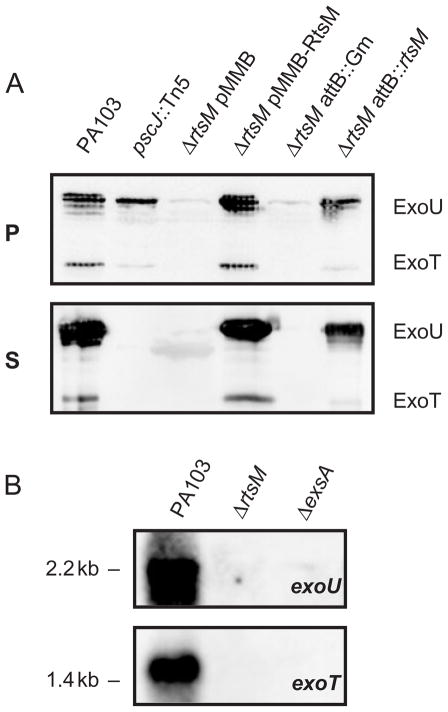Fig. 4.
A. Western immunoblot analysis of whole-cell pellet lysates (P) and culture supernatants (S) of PA103 and mutant derivatives grown under TTSS-inducing conditions. Sample loading was normalized to total protein (15 μg lane−1) or bacterial counts (5 × 108 cfu lane−1) for pellet and supernatant samples respectively. Polypeptides were separated by SDS-PAGE, transferred to PVDF and probed with polyclonal antiserum that recognizes TTSS effectors. The absence of ExoU or ExoT bands in supernants indicates a defect in secretion, while the absence of bands in the pellet indicates a defect in production. ΔrtsM pMMB (empty vector) and ΔrtsM attB::Gm serve as controls for the plasmid complemented strain ΔrtsM pMMB-RtsM and the strain carrying an ectopic copy of RtsM integrated at the attB site of ΔrtsM respectively.
B. Northern blot analysis of RNA prepared from PA103, ΔrtsM or ΔexsA bacteria grown under TTSS-inducing conditions. Five microgram total RNA was separated by electrophoresis, blotted to nitrocellulose and probed with riboprobes specific for exoU or exoT mRNA. Equal loading was confirmed by methylene blue staining of rRNA (not shown).

